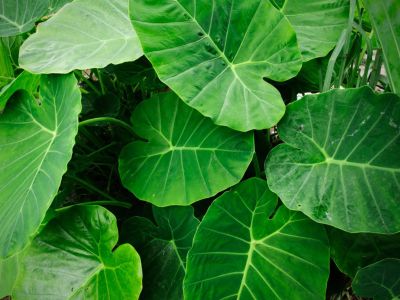How to Overwinter Elephant Ear Plants
If you would like, elephant ear plants can be brought into the house and treated as a houseplant for the winter. If you decide to keep your elephant ear as a houseplant, it will need high light and the soil needs to stay constantly moist. You will also want to make sure that it gets plenty of humidity. In the spring, once all danger of frost has passed, you can put your elephant ear plants back outside.
How to Overwinter Elephant Ear Bulbs
While many people use the phrase “elephant ear bulbs,” elephant ears actually grow from tubers. Since so many people use the incorrect term, we will use it here to avoid confusion. The first step for storing elephant ear bulbs is to dig them out of the soil. It is very important to the success of saving elephant ears for the winter that you dig the elephant ear bulbs out of the ground undamaged. Any damage to the elephant ear bulb may result in the bulb rotting over the winter. In order to keep the bulb undamaged, it is a good idea to start digging about a foot (31 cm.) away from the base of the plant and gently lift the plant and bulb. The next step for saving elephant ears is to clean the elephant ear bulbs. They can be gently rinsed, but do not scrub them. It is okay if some dirt is still on the bulb. You can also cut off any remaining foliage at this time. After you clean the elephant ear bulbs, they must be dried. Keep elephant ear bulbs in a warm (but not hot), dark place for about a week. Make sure that the area has good air circulation so that the bulbs dry properly. After this, keep elephant ear bulbs wrapped in paper and in a cool, dry place. While you are storing elephant ear bulbs, check on them every few weeks to make sure that there are no pests or rot. If you find pests, treat the bulbs with an insecticide. If you find rot, discard the damaged elephant ear bulb so that the rot does not spread to the other bulbs. NOTE: Please be aware that elephant ear bulbs and leaves contain calcium oxalate, or oxalic acid, which may cause skin irritation and burning in sensitive individuals. Always use care when handling these plants.
